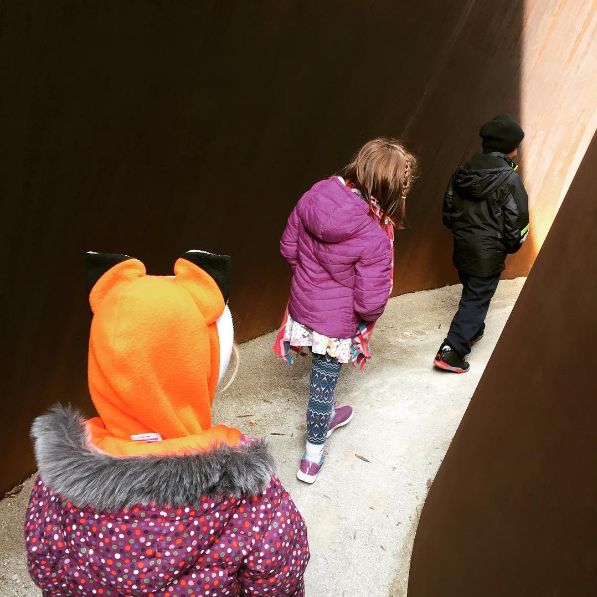
Photo courtesy of the author on Instagram.
Teaching students how to think critically is perhaps the most important lesson an educator can impart. This activity is for teachers interested in taking their students to a local art museum. It encourages students of all ages to consider what is and isn’t there, who is and who isn’t there, and how the collections are arranged, all while discovering new ways to engage with the institution and the art inside it.
For our field trips, I took three fourth grade classes to the Saint Louis Art Museum. Before going, we discussed the role of museums in contemporary society–what needs they serve, and which people visit most frequently. We looked at work by the Guerrilla Girls and watched the ART21 “Exclusive,” Kerry James Marshall: On Museums. Valuing diversity is one of the pillars at our school and we give the concepts of discrimination, diversity, and equality a lot of thought throughout every grade level. We’re fortunate at New City School to be able to foster conversations around diversity, so it’s a topic our students are comfortable discussing.
Rather than giving students your own questions to answer, take time before your museum trip to facilitate a class discussion on what sorts of things your student should be on the lookout for in a museum setting. Let them come up with the questions, so that when it comes time to answer them, the students will be more engaged and invested in the answers they find.
The questions my classes came up with were:
- How is the museum arranged? What is the flow?
- What do we think the most important collection/gallery is based on location?
- What is the least important gallery based on location?
- Where is the Native American art?
- Who is visiting the museum? Who is working at the museum?
- And they would like to survey several rooms: Who is in the art and who are the artists in terms of race and gender.
(Pretty impressive for 9-year olds!)
When I asked them about the museum’s values, they came up with the following words: famous art, money, community/caring for everyone in our city, patrons, visitors, prestige.

Students exploring Richard Serra’s work. Photo courtesy of the author on Instagram.
First visit:
We made our first museum visit with the singular task of finding the answers to their questions. I typed up all of their questions and students took notes on these custom-made printouts. We spent about an hour at the museum while the students found the answers they were looking for. I have three classes and each class was assigned to a particular gallery to survey representation through a diversity-based lens.
Second visit:
The following week, we came back to the museum and had 40 minutes of discussion time followed by 20 minutes of studio time. The students broke up into small groups and each group wrote their responses for each question on post-it notes. At the end of the trip, we talked about the similarities and differences between each group’s observations for each question.
By allowing students to create and answer their own questions, and by answering the questions individually the first time, and as small groups during our second visit, my fourth grade classes were able to obtain a solid foundational understanding of what it means to critically investigate an arts institution. Who is represented and who isn’t? And more importantly, what can we do to change that?
Share your experiences using this activity in the comments below!



